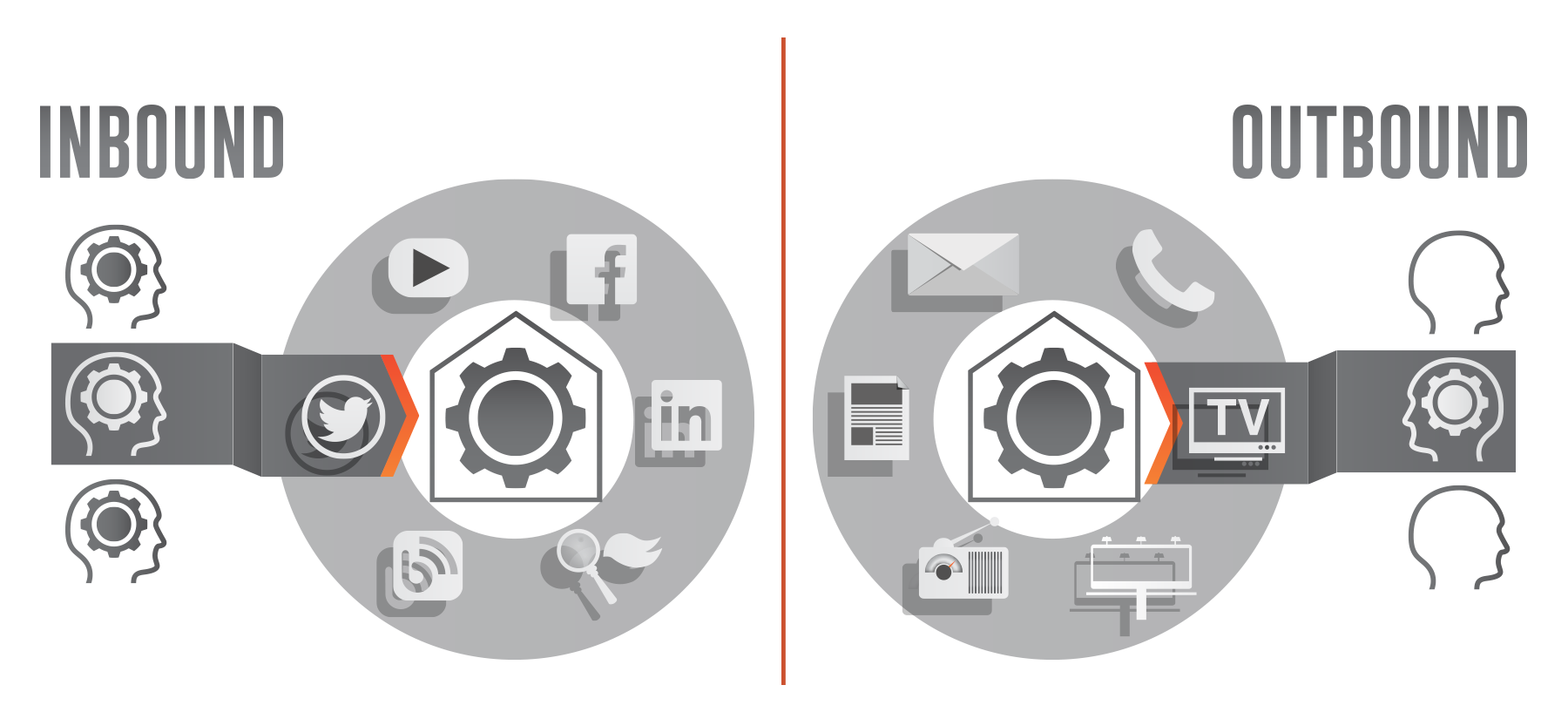INBOUND vs. OUTBOUND MARKETING
Small and mid-size companies rejoice! Through the power of social media never before has it been more possible and affordable to develop an intimate conversation with your target audience. Enter the new school of inbound marketing. But let’s not write off conventional (outbound) marketing just yet. Learn about the differences below and develop your own strategy.
Outbound marketing is the traditional form of marketing we’re familiar with; TV commercials, radio spots, billboard ads, telemarketing, trade shows, etc. It’s a one-size fits all message that spreads over a much wider audience regardless of their readiness and willingness to engage or buy your product.
Typically outbound marketing relies on a captive audience at a sporting event, inside a subway train, at a tradeshow, inside a YouTube video pre-roll, etc. Hence, it has earned a bad reputation for being interruptive.
Inbound marketing involves building a community of consumers who share a common affinity for your brand. You provide valuable content around your product that will cause people to gravitate naturally towards your company.
Inbound marketing utilizes social media, videos, blogs, SEO, email marketing, and various other tools that encourage a conversation between your company and your consumers. You provide information relevant to your brand which may be entertaining or educational, which your consumers then organically engage with.
Inbound marketing has clearly gained a lot of popularity as it's the logical choice amongst most modern day businesses. Conversely, outbound marketing, costing significantly more per customer acquisition and inability to adapt to changing consumer behavior, has been declining as an antiquated form of communication. However this is not to say that outbound marketing has been completely replaced by inbound marketing. Advertising a sequel to your favorite movie, or a breakthrough technology from an electronics company can perhaps best be accomplished by outbound marketing.
INBOUND CONS:
More Complex - Videos, blogs, social media, have their own set of rules and best practices.
Long Term Strategy - Your campaign needs time to be discovered and percolate through user shares.
INBOUND PROS:
Adaptable - Campaign can rapidly flex to changing consumer behavior.
High Retention - Customers opt to engage with your brand.
SEO friendly - Search engines rank you favorably when you utilize this method effectively.
Measurable - Analytics provide powerful insights.
OUTBOUND CONS:
Interruptive - Captive audience may become annoyed by your brand.
Low Hit Rate - You must optimize messaging exposure to counter the low statistical margins.
No SEO - Little can be done to drive traffic to your website.
Difficult to Measure - Greater margin for error especially when a lot of money is being invested.
Much Higher Costs.
OUTBOUND PROS:
Fast Credibility - Especially when published through established media.
Wider Reach - You may hit unexpected demographics.
Visibility - In a saturated market, your company can more easily stand out.
Immediate Response - Consumers can react to purchase sooner while the message is "hot".
To learn more about how you can build your inbound marketing campaign, please contact edison@movefoundry.com.





